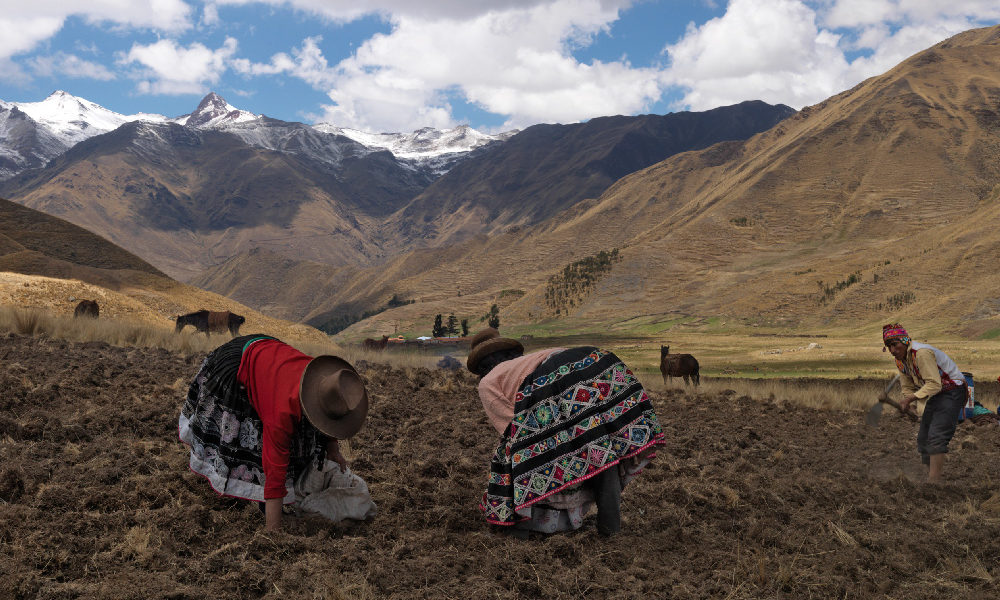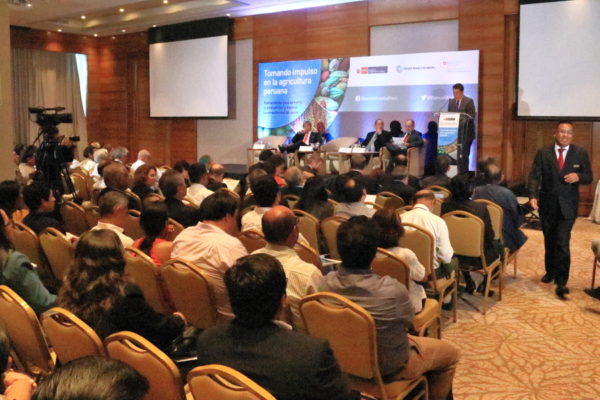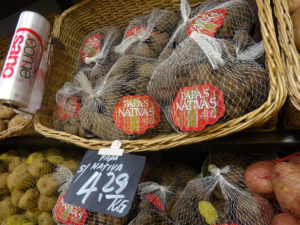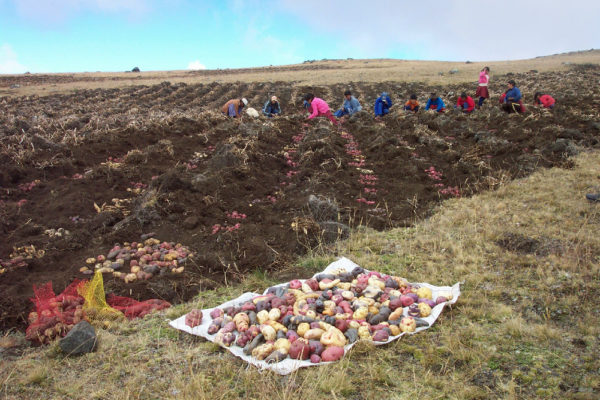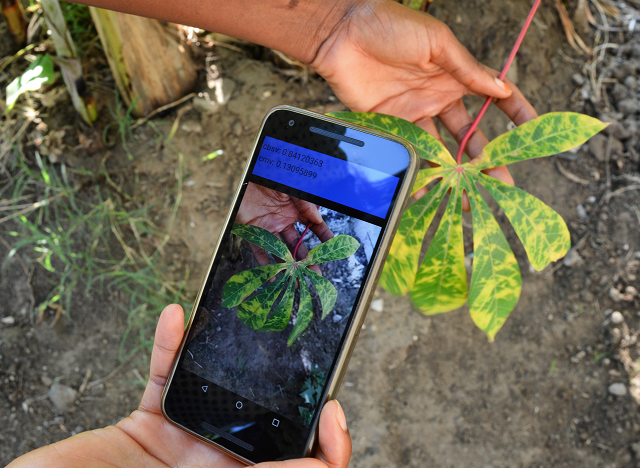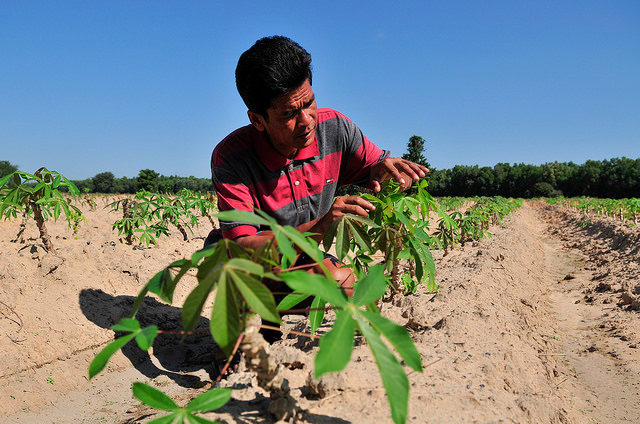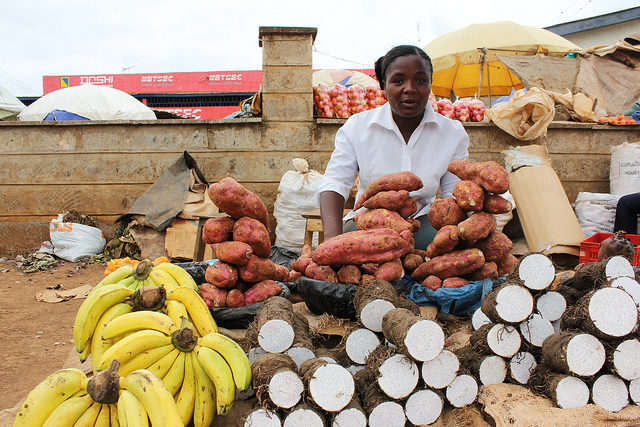A book on Peruvian agriculture recently published by the World Bank highlights the dynamism of the sector and its impressive growth in the past decade. However, closer analysis shows how most of that growth has been the result of large-scale farming in the country’s coastal lowlands, whereas the vast majority of smallholders in the Andean highlands and Amazon have seen little progress. Yet there is some good news for Andean farmers, since a growing number have been able to access better-paying markets for native potato varieties, thanks to years of work by the International Potato Center (CIP) and partners.
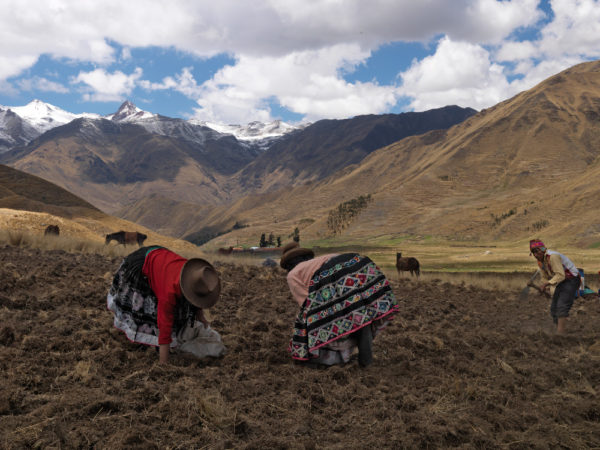
Potato farmers the in Peruvian Andes, where productivity growth in agriculture has largely been stagnant. Credit:CIP
The book Gaining Momentum in Peruvian Agriculture: Opportunities to Increase Productivity and Enhance Competitiveness, launched in a high level event on March 01 in Lima, examines Peru’s agricultural development over the past two decades and the prospects for the coming years. The country’s agricultural sector averaged 3.3% growth from 2000 to 2015 and it employs approximately one in every four Peruvians. However, as noted by the book’s lead author, World Bank economist Michael Morris, most of that growth has been in the coastal region, whereas productivity growth in agriculture in the Andean highlands has largely been stagnant. The highlands, where potato is the principal crop of more than 80% of farmers, consequently suffer higher levels of poverty and malnutrition than the national average. The study also highlighted the growing challenge of climate change, which will require both financial incentives for adaptation and new technologies such as better-adapted potato varieties resulting from plant breeding.
In an effort to illustrate the potential for a more inclusive model of agricultural development, the authors included case studies in the book of examples of smallholders gaining access to markets that pay preferential prices for their crops. One of those case studies examines the development of native potato value chains that CIP coordinated through the Papa Andina Program. That program brought together public institutions, businesses and NGOs in Peru in a project called INCOPA, in order to tap the potential of the country’s approximately 3,000 potato varieties for reducing rural poverty.
INCOPA’s innovation platforms developed value chains for potato varieties that had traditionally only been consumed in the Andes, but are now sold and served in the supermarkets and restaurants of Peru’s largest cities, and are exported as potato chips or other processed foods. INCOPA also catalyzed the creation of Peru’s National Potato Day and organized media campaigns that pushed demand up from an estimated 70 kg of potato consumed per capita per year in the early 2000s to 80 kg at present, while sales of native potatoes increased by more than 70% and prices increased 150%. The total value of native potato exports rose from US$821,000 in 2010 to US$2.5 million in 2015, mostly from packaged snacks.
This is encouraging news for the approximately 700,000 Peruvian families that depend on potatoes, though most of them continue to produce for local or commodity markets. Morris said that niche products such as native potatoes have their limits, but should be part of a broader strategy. He noted that there have been encouraging developments not only in native potatoes but also other traditional crops.
Luz Díaz, a Senior Agribusiness Specialist at the World Bank and one of the book’s authors, explained that she and her colleagues included four cases studies in the book – the others deal with coffee, cocoa and banana – because they represent success stories of small farmers who have increased their incomes by gaining access to niche markets.
“We highlighted these cases because all of them bring lessons on how to develop inclusive value chains that generate opportunities for smallholders,” she said. “In the case of native potatoes, international development agencies supported and created a space for the institutions and local stakeholders to come together and interact. It has been at the core of what value chain development should be, to have this convergence of views and a shared vision to move forward.”
Miguel Ordinola, an agricultural economist at CIP who coordinated INCOPA, explained that in addition to helping Andean farmers find better markets for their potatoes, the project contributed to the development of a Participatory Market Chain Approach that has since been used in other countries of South America, East Africa and Southeast Asia. He explained that other organizations have copied the INCOPA model to help farmers tap the potential of local crop biodiversity to improve their livelihoods, and that interest in the approach is growing. Ordinola added that the sale of native potatoes has not only improved the incomes of smallholder families, it has created a sense of pride among Andean farmers, because native potatoes are part of their natural and cultural heritage.
“The experience related here will give us an opportunity to expand the scale of this kind of approach, since these publications are recognized on a national and international level,” Ordinola said. “This gives the market chain approach we applied to native potatoes here in Peru greater visibility, and that’s very important for CIP.”
Graham Thiele, Director of the CGIAR Research Program on Roots Tubers and Bananas (RTB), was one of the coordinators of Papa Andina. He observed that lessons learned from Papa Andina could be applied to other RTB crops, adding that they have already informed sweetpotato, potato and banana interventions in Uganda, Indonesia and the Philippines..
“There are lessons to be drawn from that experience on how you can take a crop that is undervalued, that is grown by people in more challenging environments, poor people with few resources, and how it can be revalued to generate better livelihoods for those people,” Thiele said. “I think that there are very strong lessons that we can apply to other crops in the RTB portfolio around the world.”
Blog contributed by David Dudenhoefer for the International Potato Center.
